RSPB Arne is a nature reserve, a peninsula covered mostly in rare lowland heath sticking out into the west side of Poole Harbour. You may remember it from my Christmas Adventure with Tom & Catherine this year. It welcomes day visitors but you don’t normally get to camp there so when the opportunity came up to join the Big Wild Sleepout, I jumped on it.
The instructions were to arrive with my QR code and my kit between 3pm and 5pm on Saturday. Our luggage would be loaded onto the trailer and the ATV would deliver it to the secret campsite while we walked the 20-odd minutes to it.
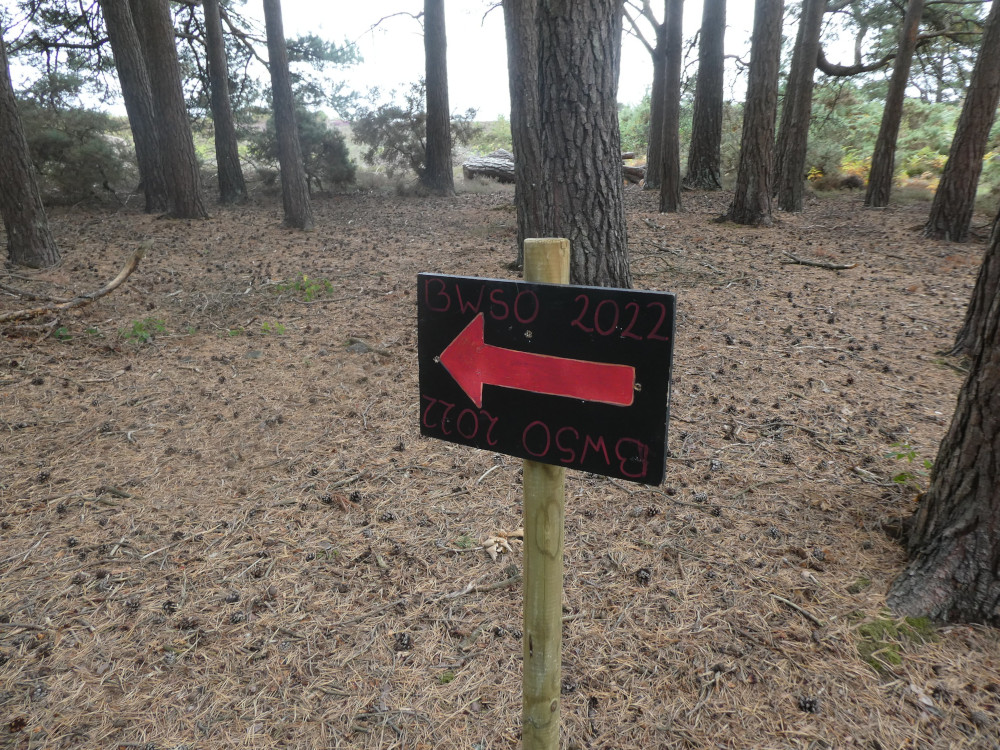
The only bit of Arne I’ve been to is north of the car park, up and around Shipstal Point, which is the main open public bit of the reserve. I’d been picturing that area, trying to figure out where there was space for tents and where was within easy reach of the toilet block. But in fact, we went south, to Coombe Meadow which is alongside Middlebere Lake, a shallow muddy inlet of Poole Harbour that thins to a stream a little further up. Places like this are the reason Poole Harbour’s average depth is only 48cm.

I walked through the pinewoods and along the gorse-lined lane, jumping aside for the luggage-laden ATV and arrived at what felt a bit like a festival, albeit a small one. It’s normally a rabbit field and it was dry and yellow and full of holes. The ATV had stopped to the right and Man In Charge Dave had unloaded the trailer already, grouping together the stuff he’d noticed and the stuff with matching name labels – yes, all our stuff had been given labels, mostly made of RSPB volunteers’ old cereal boxes. I’d brought my tiny one-man tent, packed my bedding up neatly with its new strap-and-buckle system and packed everything else I needed in my 45l backpack. I felt like I’d packed badly and heavily but seeing people chuck bundles of pillows, loose sleeping bags, camp chairs, holdalls the size of my fencing bag etc into the trailer, I began to feel quite organised.
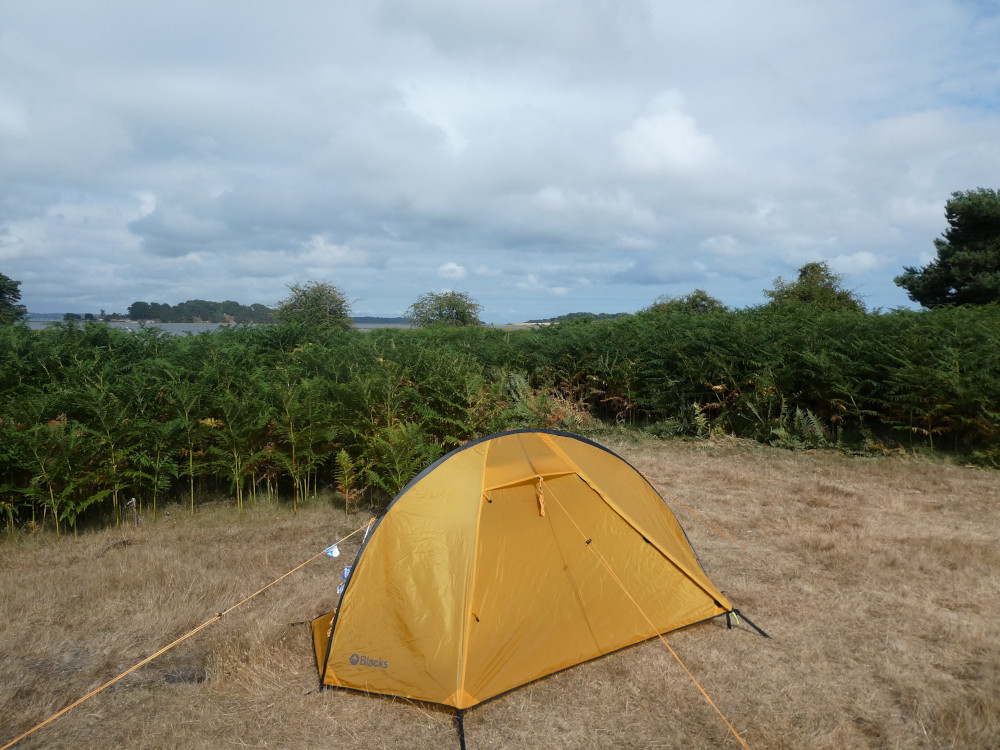
I found myself a corner and popped the tent up. I like to have something behind me, especially in a tiny tent, but people were already pitching randomly in the middle of the field. Once the tent was up and my bedding unrolled, it occurred to me that it was a very small tent to contain me, my 45l camp bag and my 28l day bag. In fact, it was pretty claustrophobic. When I booked this, they asked for tent dimensions and I’d looked up the size of my blue two-man with the enormous porch. Why hadn’t I brought that one? Because the little one felt more like an adventure!

I pulled my camp blanket back out, got out the leftover French Monster Munch crisps (very different from the UK variety!) that my parents had brought home from their holiday, and opened my welcome pack. I had a map of the site with the rules and itinerary and a double-sided map showing where the Saturday afternoon and Sunday morning activities were. But there was something still in the envelope… A badge! A sew-on badge for my camp blanket! I had ideas about going to the reserve shop in the hope of finding an Arne badge to commemorate the occasion and here was a proper Big Wild Sleepout one!
Saturday afternoon activities were pond dipping, bug hunting, roundhouse maintenance or just enjoying the outdoors. I like a roundhouse and it was in the camp field so off I went. It was built by the Ancient Technologies Centre at Cranborne in East Dorset – a visit there is a rite of passage for all Dorset schoolchildren, so I explained to the volunteer grooming the thatched roof that all I knew about roundhouses I learned there when I was about eight. We ground flour on various millstones and baked bread but the bread got burnt so someone had to rush out for rolls and pretend they were the ones we’d made. This one is just a model, really. The daub in its wattle-and-daub walls – a mix mostly of clay and sand – had dried out and cracked badly and the real maintenance work would be in repairing it. The materials are probably shipped in but there is evidence of Bronze Age inhabitance of Arne and the buildings would have used reed from the reed beds right here, clay from north of Shipstal and hazel from the original woodlands. In fact, clay was mined at Arne right up until only about ten years ago.
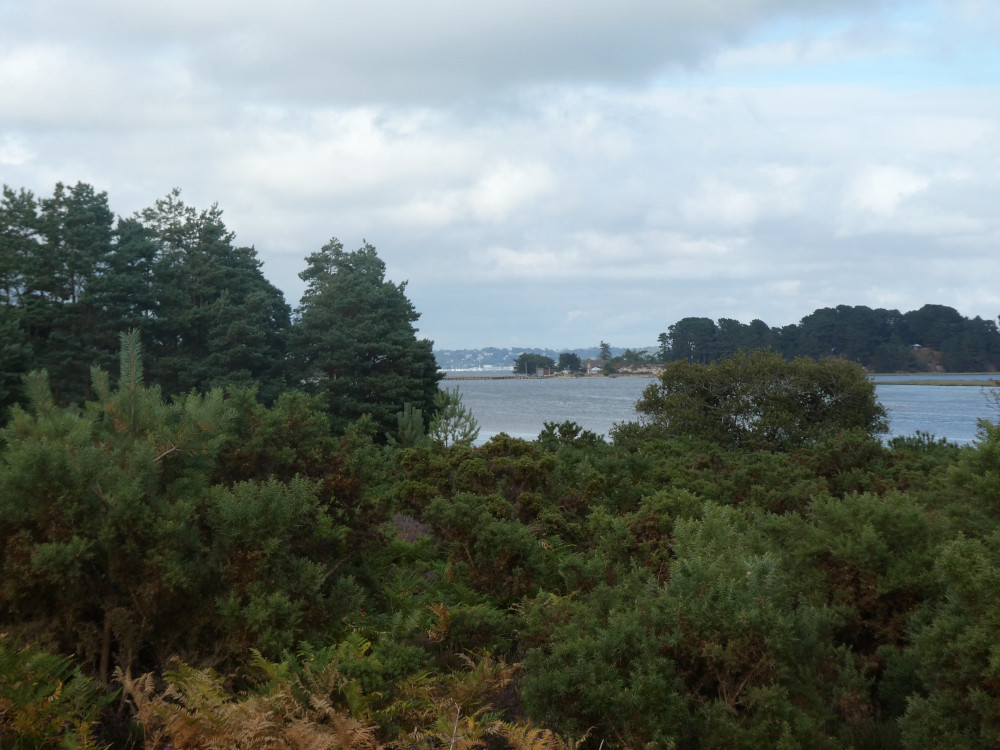
Having absorbed a lot about roundhouses and heath conservation, I went off for a little explore and found the observation screen off the main path for this area. Everyone else was doing the official activities and I had absolute peace and silence. I spied plenty of gulls, an oystercatcher, an egret and a “tall brown wadey thing” that was later identified as a curlew. I’m quite weak on wading birds – the only ones I could name are, I think, pretty tiny.
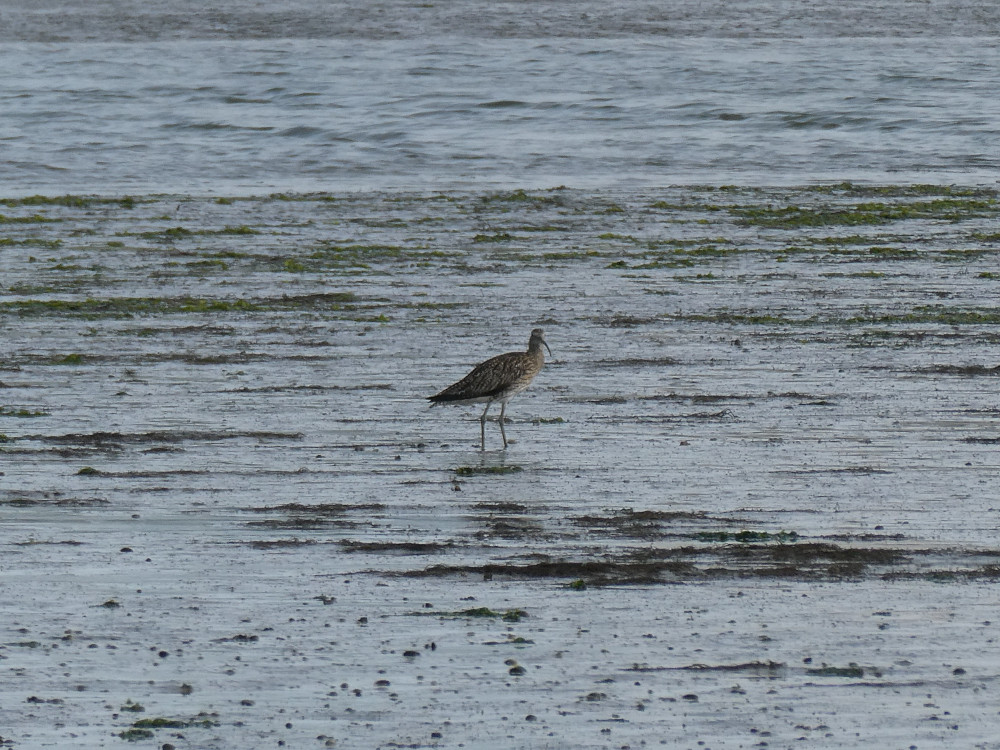
I returned to camp for dinner. They’d set up three big cast iron pots on heavy-duty gas burners and we had a choice of locally-reared beef stew, some kind of vegetable stew and a vegan/kids’ butternut squash pasta, with huge rustic rolls and an entire tub of pepper slices and salad and later, the ATV turned up laden with little tubs of Purbeck ice cream. Under the circumstances, I opted not for my go-to mint choc chip but ordinary vanilla.
After dinner, we gathered for a nature walk. We had three expert guides supported by a gaggle of RSPB camp volunteers and we’d go out and learn about the land and look for birds.

I learned that there are four types of heather at Arne – two are heathers and they have smooth leaves and two are heaths and they have hairy leaves. I could see the difference between the two varieties alongside the path but I forget the names and I’d never see the difference again. I saw dwarf gorse, which is tiny, softer and yellower than the ordinary type. I learned that the RSPB cut out strips of heather to improve access for wildlife like smooth snakes and that people want to buy the heather – golf courses and fire services, mostly. Heathland is not a landscape that stays formed very naturally so it takes work to manage – non-native pine trees keep popping up and have to be removed, for example, to keep it as heath and not let it turn into woodland. Wildlife actually likes reed beds to be cut, similarly. This kind of conservation isn’t just about taking care of the area, it’s about managing it and fighting it. A couple of hundred years ago, half of south Dorset was heathland. Now most of it has gone but it clings on in pockets. Then idiots come along in summer and light portable barbecues and cause massive wildfires. You know those unprecedented things you had in London last week? We have those regularly down here. Wareham Forest burned for the best part of three weeks back in 2019.

Anyway. I’m the least enthusiastic birdwatcher of the entire camp, it seems. Everyone else glances at an egret or a curlew and shrugs. That’s exciting! Even for me, the novelty of an oystercatcher has worn off, although I still love them but come on, there’s a curlew and no one else wants to watch it! They were hoping to see nightjar and spoonbill and maybe even osprey – see me using the birdwatcher’s singular!
The osprey are exciting, though. A pair from a translocation project have hatched two chicks in Poole Harbour this year, the first babies born here in 200 years, and on Friday they started to fledge. I think that means the mother will now leave them to go hunting but the father will stay with the kids until they’re ready to depart for their first migration. 60% of ospreys don’t make it back from migration so there’s a strong chance we’ll never see these chicks again. If they do come back, they’ll probably arrive too late for breeding season next year but they might produce chicks of their own in the harbour in 2024.
We went down to the pond to look for wasp spiders and our guide produced a tiny (and therefore probably disproportionately expensive) eyeglass for us to examine the tiny hairs on that fourth heather, although this one is a heath.

And then we went looking for nightjars. I listened to them all night while I was tree camping on Brownsea last year – that churring is both distinctive and loud – but we were hoping to see one. They think we’re cows and they come to eat the bugs following us. No luck. We were probably too late – twenty minutes earlier and we might have caught a glimpse. Part of the group re-walked the circuit but by then it was too dark to see them anyway. I gladly returned to the campsite. My sprained ankle was well recovered but standing around seems to make it ache and besides, we were an hour late for the campfire.

We’d had an email on Thursday reminding us of everything that needed to be remembered and that email mentioned that due to the incredibly dry weather, we’d only have a campfire if the wind was behaving correctly. By Saturday they’d taken the entirely correct decision not to have a campfire – it could have destroyed the entire reserve and made national news! – so they’d put up a wooden frame in the shape of a tall fire and strung it with battery-powered fairy lights. We came in dribs and drabs, ate our marshmallows raw and drifted off to bed. I sang quietly to myself – had I been in charge, I’d have got a round of Campfire’s Burning going at least – and then took to my tiny tent.
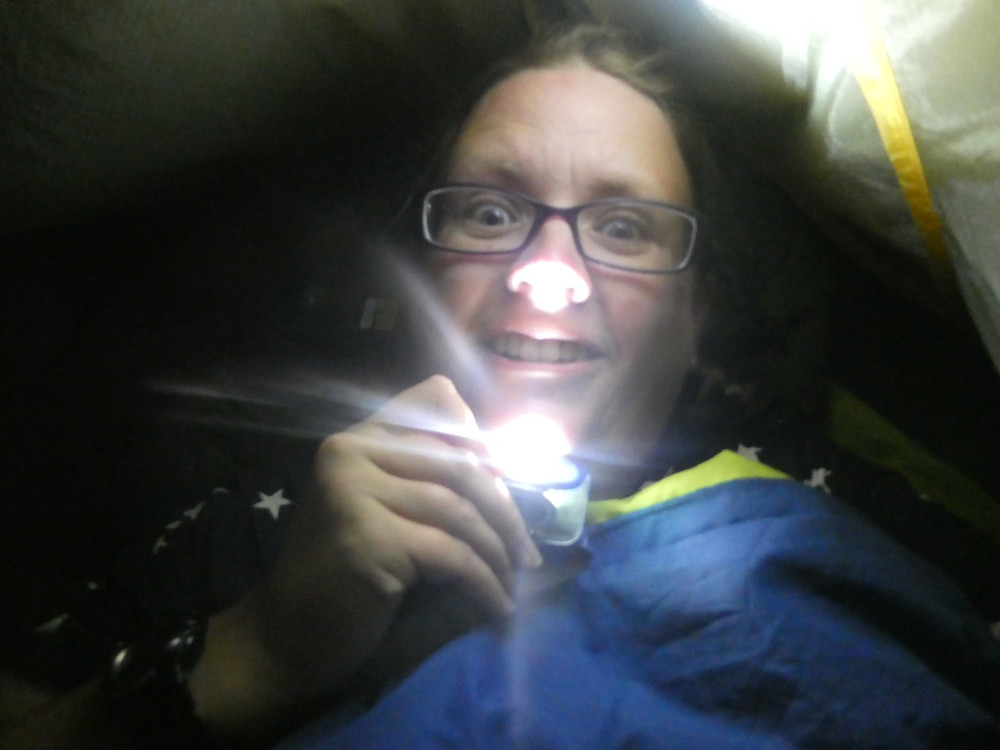
I never sleep well in a tent. Too hot, too cold, can’t turn over, restless feet, noises outside – and then suddenly it was 6:34 and I had to be dressed and ready for the osprey walk in 25 minutes. I don’t drink coffee but there had to be something in it so I got a weak cup of what little hot chocolate was left over from last night and went off very blearily.


We didn’t see osprey. No one imagined we might. We spied a spoonbill flying over the lake and a kestrel buzzing around. The usual collection of gulls, oystercatchers, egrets and curlews. A pair of sika deer on the other side of the lake – they were introduced onto Brownsea a hundred or so years ago and assured that they definitely wouldn’t swim across salt water. They did. Now there are so many they have to be culled to keep the numbers under control.
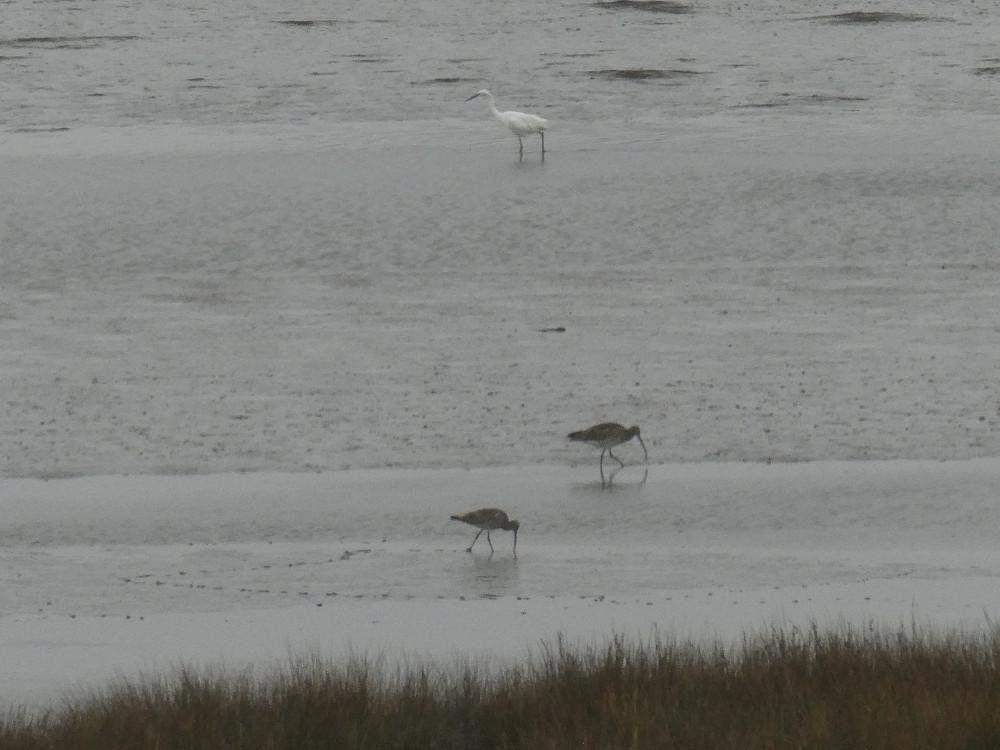
As we walked back to camp, we were passed by the ATV bearing breakfast. You could choose a bacon roll, veggie sausages or – the most popular option when I put my name down – pastries, which turned out to be almond croissants, cheese straws or ginger & date scones. Later they cooked the leftover rolls on the bacon-fat hot plate and people covered the improvised toast in lots of creamy-looking butter and jam, without anyone starting the tedious and pointless argument about which goes first.

Once we were recovered from breakfast it was time to strike camp, dump everything in the trailer and walk back to the car park. Our Sleepout tickets gave us free access to the rest of the reserve for the day but I was so tired and I felt filthy and I just wanted to go home, eat some real toast and spend the rest of the day asleep in the bath. And here I am having finished writing the blog about it too!